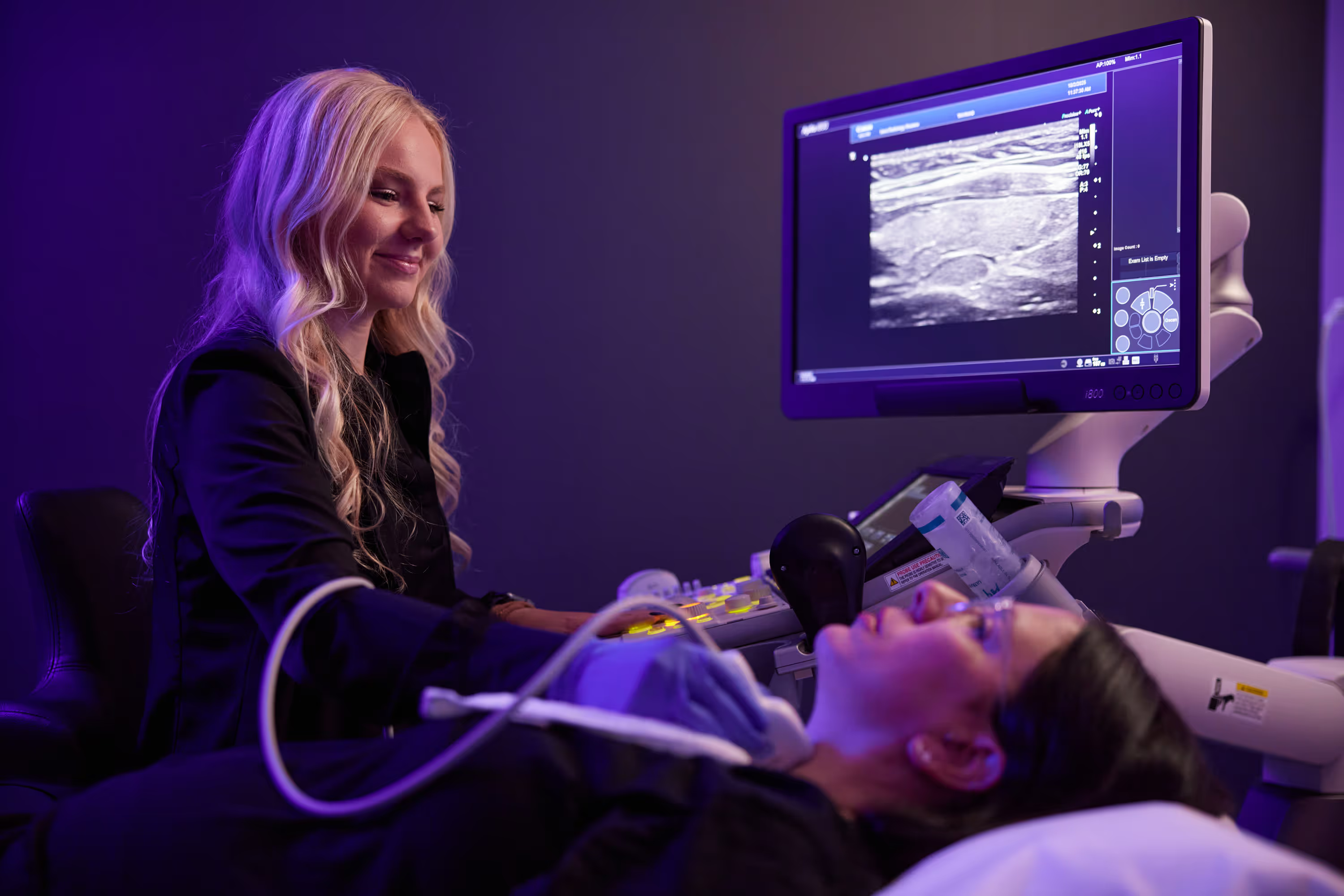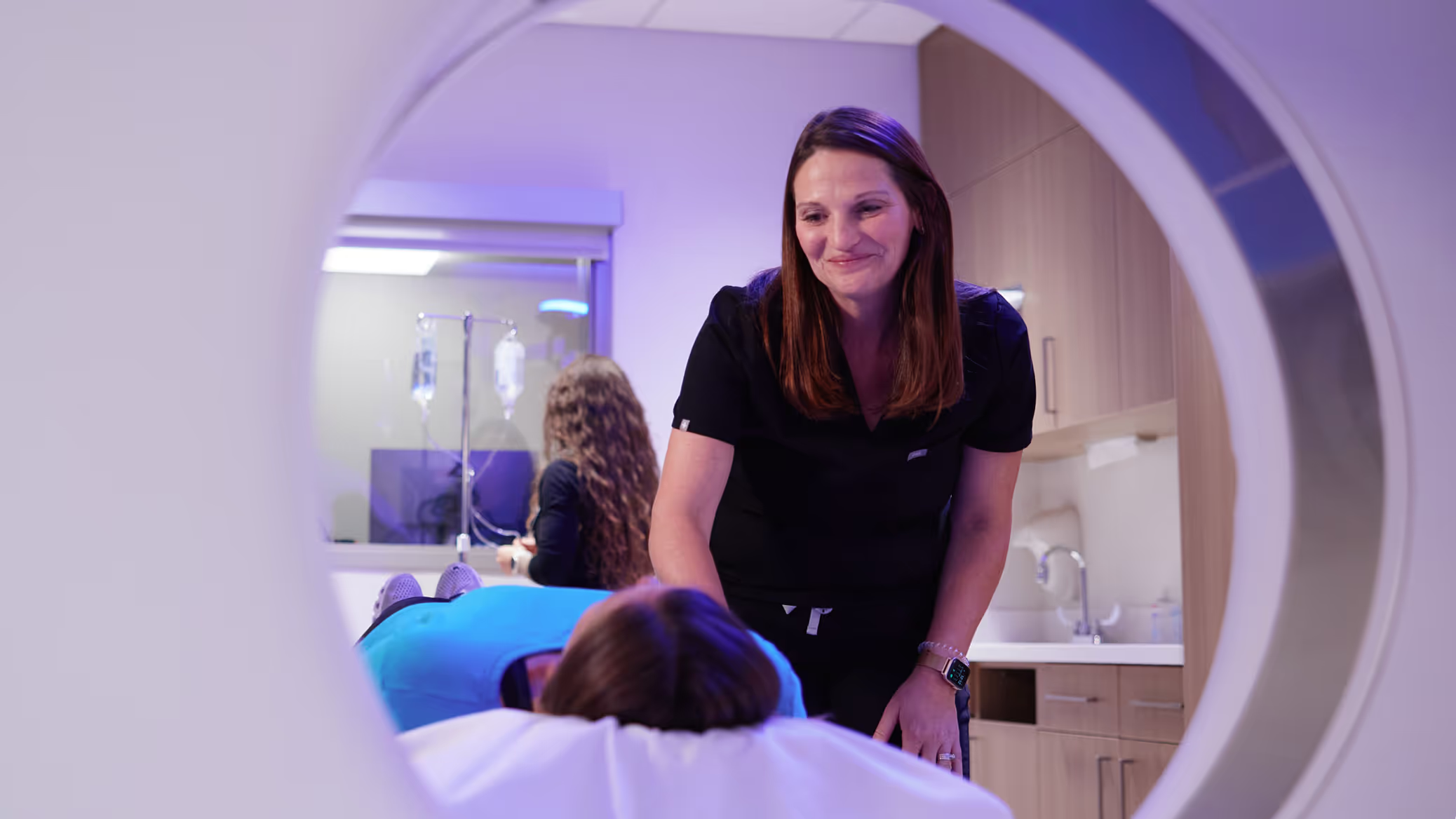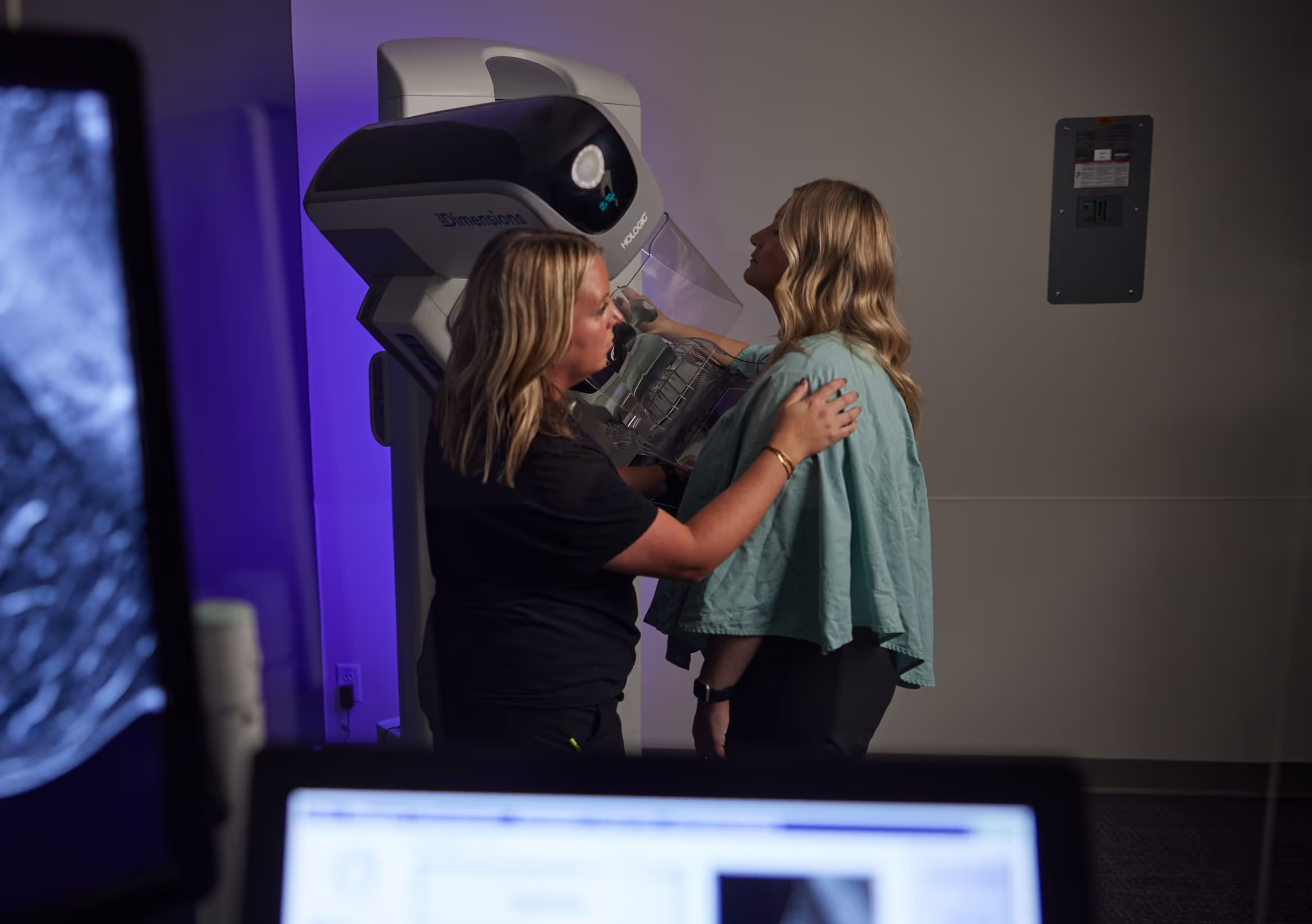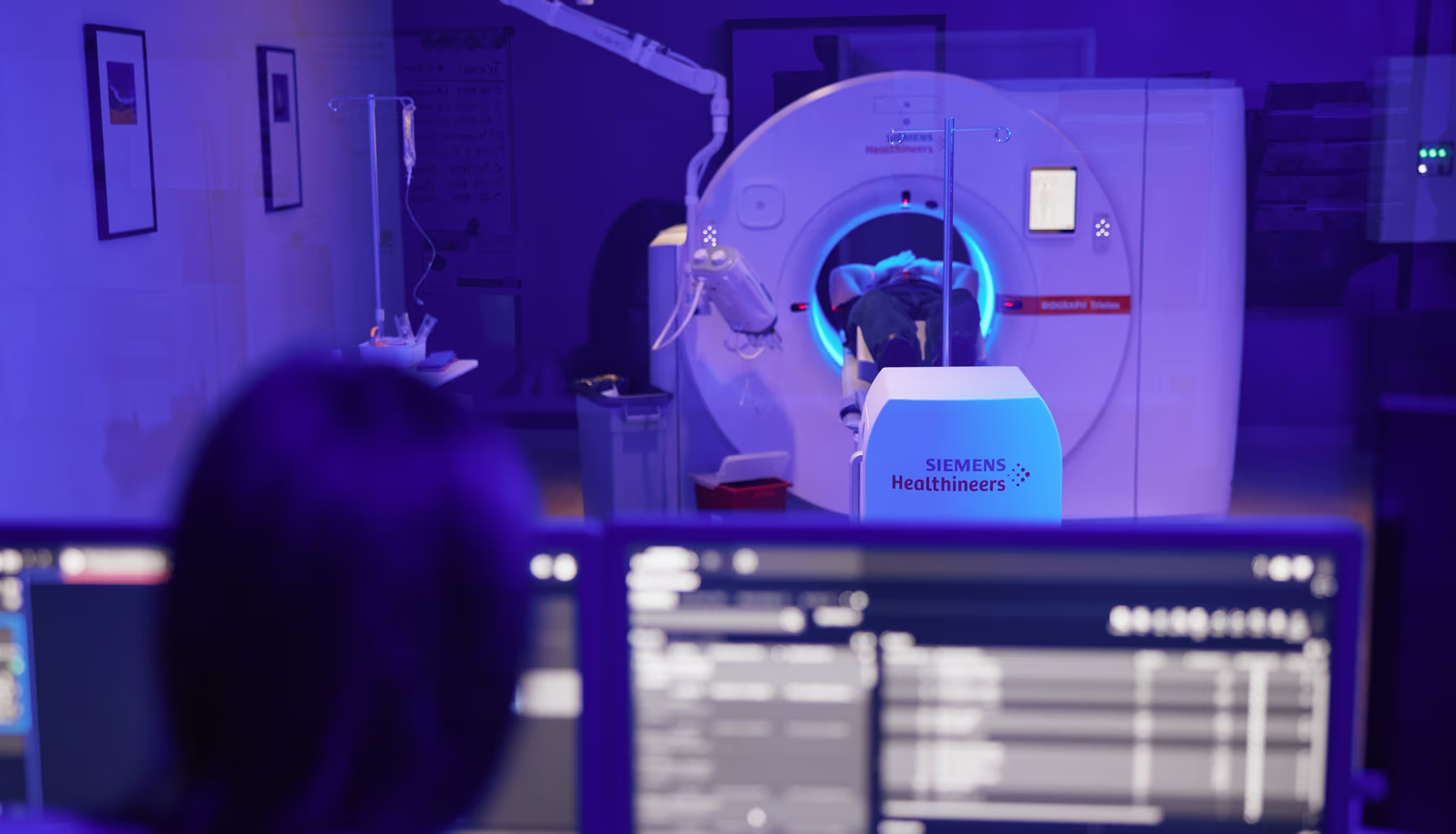Diagnostic Imaging
Ultrasound

What is an Ultrasound?
Ultrasound imaging, sometimes referred to as sonography, is a noninvasive medical procedure used to capture images in real time. It shows the structure and movement of organs and blood flowing through blood vessels. Ultrasound uses sound waves—not radiation—to produce images. Ultrasound can be used to evaluate organs and diagnose problems in the thyroid, abdomen, pelvis, kidneys, testicles, and extremities, as well as the carotid and renal arteries. We also perform obstetric, doppler, and venous ultrasounds. (For more information ultrasounds specific to women, see Women’s Imaging)

What happens during the test?
Our technologist will take a brief medical history. You will be asked to stand, sit, or lie down on the scanning table, depending on the part of the body to be scanned. The ultrasound technologist (sonographer) will place a clear gel on the area of the body to be imaged. The sonographer or radiologist will then press the transducer against the skin and sweep it back and forth over the area of interest. The transducer is a small hand-held device that resembles a microphone, attached to an ultrasound machine by a cord. The test is painless. After the exam, the gel is wiped off, and you may resume normal activities.
Ultrasounds typically take 30 to 60 minutes, depending on the exam performed.
How do I prepare for the test?
Most ultrasound exams do not require any preparation prior to the exam. Wear comfortable clothing around the area to be scanned. You may also be asked to wear a gown. For abdominal ultrasounds, you will be asked to fast for 6 hours prior to the exam. For pelvic exams, please come to our office with a full bladder. For kidney exams, ensure you are well hydrated. Inform your technologist if you have any old images so they may be used for comparison.
When can I expect the results?
A radiologist will review the images and send a report to your referring physician within one business day. Your doctor will review the report and contact you with the results.
Downloadable Resources
FAQ's
Where we offer
Ultrasound

3625 N Ankeny Blvd. Suite H Ankeny, IA 50023
Mon – Fri: 8am-5pm
Sat: Hours available for MRI and Digital Mammography
Fax: (515) 963-7619

12368 Stratford Drive Suite 300 Clive, IA 50325
Mon – Fri: 6:30am–5pm
Sat: Hours available for MRI & Digital Mammography
Fax: (515) 226-8408
Sarah Agan, R.T. (R) (M)
Phone: 515-226-9810
Fax: 515-226-8408
Email: sagan@iowarad.com

1221 Pleasant Street Suite 350 Des Moines, IA 50309
Mon – Fri: 8am-5pm
Fax: (515) 226-7493

2515 Grand Prairie Parkway, Waukee, IA 50263
Mon – Fri: 8am-5pm
Fax: (515) 226-8408
Schedule Today
At Iowa Radiology, we strive for excellence in everything we do. You can expect easy access, convenient scheduling, and timely service.
Featured Articles
Practicing Physicians
Schedule an Appointment
At Iowa Radiology, we strive for excellence in everything we do. You can expect easy access, convenient scheduling, and timely service.


































